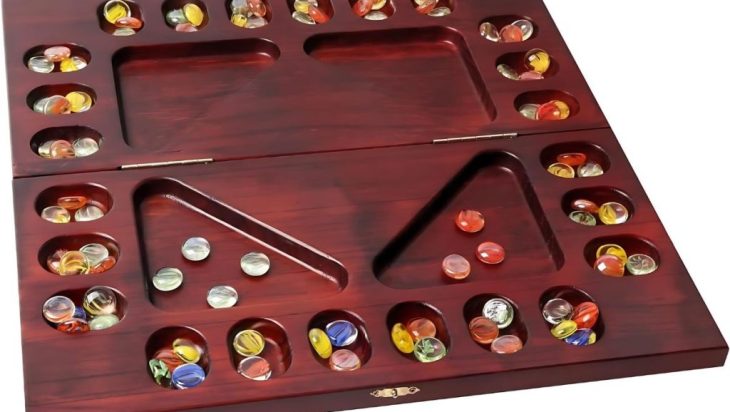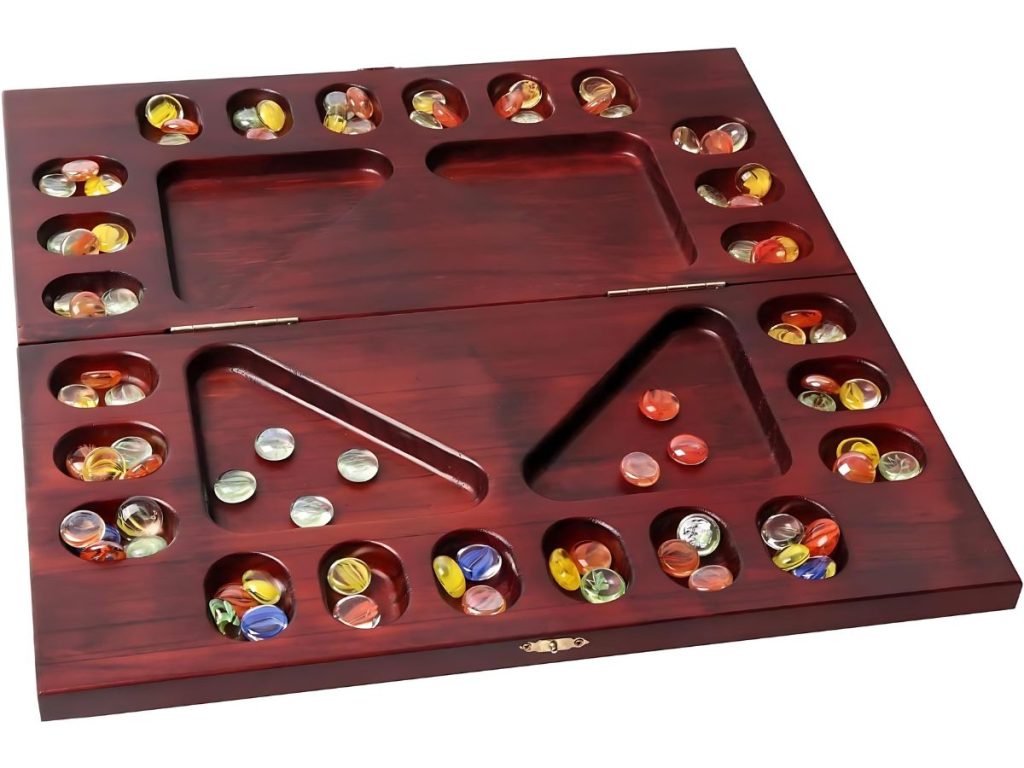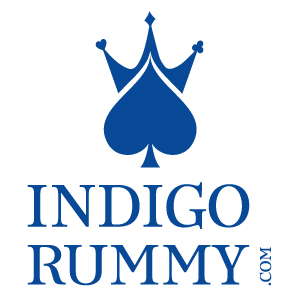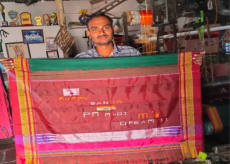Mancala: The ancient game of strategy and counting

Prepend to the content

Mancala, often referred to as one of the oldest board games in the world, has a rich history that spans thousands of years and encompasses numerous cultures. The game’s origins are deeply rooted in Africa, with archaeological evidence suggesting that versions of Mancala were played in Egypt around 1400 BCE. The game has since spread across the globe, with variations appearing in the Middle East, Asia, and the Americas.
With assistance from a local tour guide in Kenya, Veronica Waweru, an archaeologist from Yale University, has discovered intriguing ancient shallow pits carved into a rock ledge. These pits are arranged in a pattern similar to a mancala board.
A total of 20 of these ancient mancala-board-like structures were discovered at the site. Estimated to be between 5,000 and 10,000 years old, they are located within the Lewa Wildlife Conservancy in central Kenya.
“It’s a valley full of these game boards, like an ancient arcade. Given the erosion of some of the boards, I believe people were playing these games there a very long time ago,” said Waweru.
The word “Mancala” comes from the Arabic word “naqala,” which means “to move.” This reflects the core mechanic of the game, which involves the strategic movement of small stones, seeds, or beans around a board. Early boards were often simple holes dug into the ground, while later versions featured intricately carved wooden boards.
There are over 200 variations of mancala games, yet the fundamental rules remain consistent across most of them.
Recognized as one of the oldest games in history, mancala dates back 8,000 years to around 6000 BCE. Historical evidence shows that depictions of the game were even discovered on the roofs of ancient Egyptian temples.
Modern individuals in the region often play games like Mancala while herding. It’s likely that ancient herding societies engaged in similar activities. “People often view early life as brutish, nasty, and short, but perhaps it wasn’t solely about survival,” Waweru noted.
Mancala remains popular in Africa and is played in numerous countries, including Tanzania, Malawi, Mozambique, and Kenya.
From Africa, Mancala spread along trade routes to the Middle East, where it became popular in places like Yemen and Oman. By the 7th century, the game had reached Persia and India. The game’s simplicity and the ease with which boards could be made contributed to its widespread appeal. Each region developed its own rules and variations, leading to a diverse family of Mancala games.
Variations of Mancala are played across different regions: in North America and Western Europe, it’s known as Kalah; in India, it’s called pallankuzhi or pallanguzhi; and in Indonesia, it goes by the name congklak.
Despite the many variations, the basic principles of Mancala remain consistent. Players take turns picking up all the seeds from one pit on the board and distributing them, one by one, into subsequent pits. The objective is typically to capture more seeds than the opponent, with specific rules about capturing varying by version. Popular variations include Kalah, Oware, Bao, and Congkak, each with unique strategic elements.
Archaeologists have uncovered millennia-old mancala boards before, but the discoveries made by Waweru in Kenya, alongside these boards, are notably unique.
For instance, evidence suggests that people used the rocks near the ancient game boards in Kenya to sharpen metal knives. Additionally, the mancala boards were found near a site containing 19 burial cairns from ancient herding societies. But why would people barbecue and play board games near a burial site? The exact reason is unknown, but the researcher speculates that the site may have been used for ancient rituals involving board games, butchering, and burials. The mancala boards were etched into a 400-million-year-old rock, and erosion levels in different pits make it challenging to determine their exact age.
However, if we assume ancient herding societies first played the game here, the mancala boards could be around 5,000 years old, coinciding with the arrival of herders in the region.
Mancala is more than just a game; it has social and cultural importance in many societies. In Africa, it is often played during social gatherings and is used as a teaching tool for mathematical concepts and strategic thinking. The game also holds ceremonial importance in some cultures, where it is played during festivals or rites of passage.
Today, Mancala remains a beloved pastime around the world. Its simple yet deep gameplay has made it a popular choice for both casual players and strategic thinkers. Modern boards range from simple, travel-friendly versions to beautifully crafted pieces of art. Mancala is also played competitively, with tournaments held in various countries.
In an age dominated by digital entertainment, Mancala’s enduring popularity is a testament to its timeless appeal. Whether played on a smartphone app or with a handmade board and seeds, Mancala continues to bring people together, teaching patience, strategy, and the joy of a game well played.
Several groups of Mancala games host their own tournaments, such as those featured in the Mind Sports Olympiad, which includes both in-person events and the online Grand Prix.
Mancala’s enduring popularity and widespread adoption underscore its status as a timeless classic among board games. From its humble beginnings in ancient Africa to its global presence today, Mancala exemplifies the universal appeal of games that combine strategy, skill, and cultural significance. Whether played competitively in tournaments or casually at home, Mancala continues to unite people across cultures and generations, preserving its legacy as a cherished pastime and a symbol of shared humanity.
The post Mancala: The ancient game of strategy and counting appeared first on G2G News.



